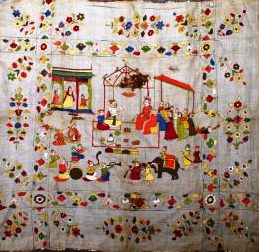‘Crafts sector’, ‘cottage industries’, ‘creative and cultural industries’, ‘traditional industries’, are only a few names used to refer to the Indian handloom and handicrafts sector. It is surprising and noteworthy how a segment of the economy that is the second largest source of livelihoods in India, after agriculture, (Crafts Council of India, 2011), is still wanting of a unanimous definition, a clear and unique identity and most importantly, of government attention. The dark clouds of ignorance and ambiguity have ruled lives and livelihoods of a community, 50 million strong! Now, however, their numbers are dwindling too. According to the United Nations, over the past 30 years, the number of Indian artisans has declined by almost 30 percent. Not surprisingly– as the younger generations are reluctant to take to crafts. They feel that this would invariably submit them to a life of impoverishment and drudgery. They are not wrong, for the problems are as varied as the composition of the sector itself and require a comprehensive cultural policy intervention by the government.
[caption id="attachment_188625" align="aligncenter" width="549"] Photo credit: Avanish Kumar[/caption]
Of the many obstacles that face the sector today, the most central is that there is an almost complete absence of a humanistic approach– one that emphasises on human beings as creative and active individuals, with personal worth and values. The...
Photo credit: Avanish Kumar[/caption]
Of the many obstacles that face the sector today, the most central is that there is an almost complete absence of a humanistic approach– one that emphasises on human beings as creative and active individuals, with personal worth and values. The...
 Photo credit: Avanish Kumar[/caption]
Of the many obstacles that face the sector today, the most central is that there is an almost complete absence of a humanistic approach– one that emphasises on human beings as creative and active individuals, with personal worth and values. The...
Photo credit: Avanish Kumar[/caption]
Of the many obstacles that face the sector today, the most central is that there is an almost complete absence of a humanistic approach– one that emphasises on human beings as creative and active individuals, with personal worth and values. The...
This is a preview. To access all the essays on the Global InCH Journal a modest subscription cost is being levied to cover costs of hosting, editing, peer reviewing etc. To subscribe, Click Here.




